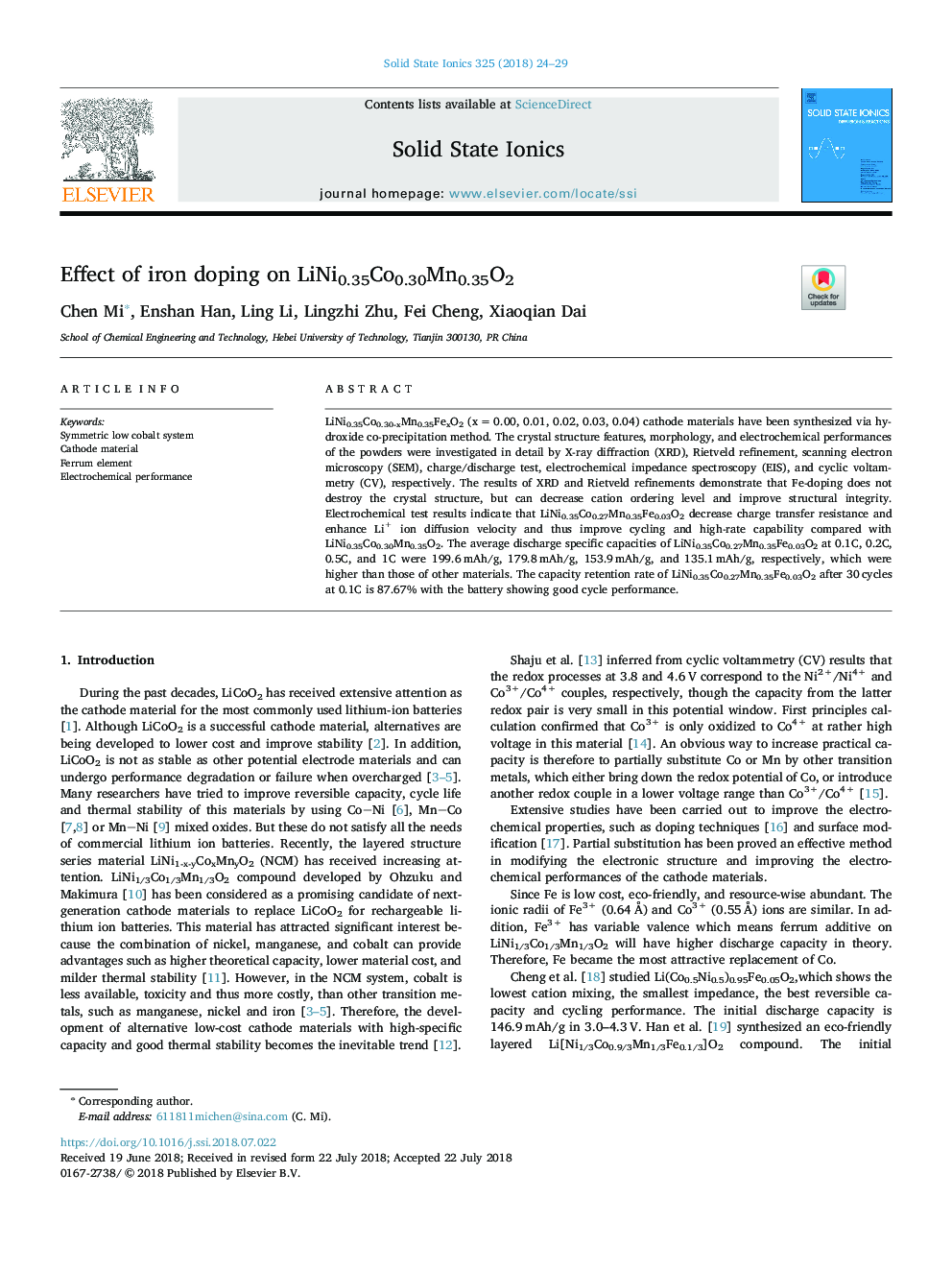| Article ID | Journal | Published Year | Pages | File Type |
|---|---|---|---|---|
| 7744162 | Solid State Ionics | 2018 | 6 Pages |
Abstract
LiNi0.35Co0.30-xMn0.35FexO2 (xâ¯=â¯0.00, 0.01, 0.02, 0.03, 0.04) cathode materials have been synthesized via hydroxide co-precipitation method. The crystal structure features, morphology, and electrochemical performances of the powders were investigated in detail by X-ray diffraction (XRD), Rietveld refinement, scanning electron microscopy (SEM), charge/discharge test, electrochemical impedance spectroscopy (EIS), and cyclic voltammetry (CV), respectively. The results of XRD and Rietveld refinements demonstrate that Fe-doping does not destroy the crystal structure, but can decrease cation ordering level and improve structural integrity. Electrochemical test results indicate that LiNi0.35Co0.27Mn0.35Fe0.03O2 decrease charge transfer resistance and enhance Li+ ion diffusion velocity and thus improve cycling and high-rate capability compared with LiNi0.35Co0.30Mn0.35O2. The average discharge specific capacities of LiNi0.35Co0.27Mn0.35Fe0.03O2 at 0.1C, 0.2C, 0.5C, and 1C were 199.6â¯mAh/g, 179.8â¯mAh/g, 153.9â¯mAh/g, and 135.1â¯mAh/g, respectively, which were higher than those of other materials. The capacity retention rate of LiNi0.35Co0.27Mn0.35Fe0.03O2 after 30â¯cycles at 0.1C is 87.67% with the battery showing good cycle performance.
Related Topics
Physical Sciences and Engineering
Chemistry
Electrochemistry
Authors
Chen Mi, Enshan Han, Ling Li, Lingzhi Zhu, Fei Cheng, Xiaoqian Dai,
